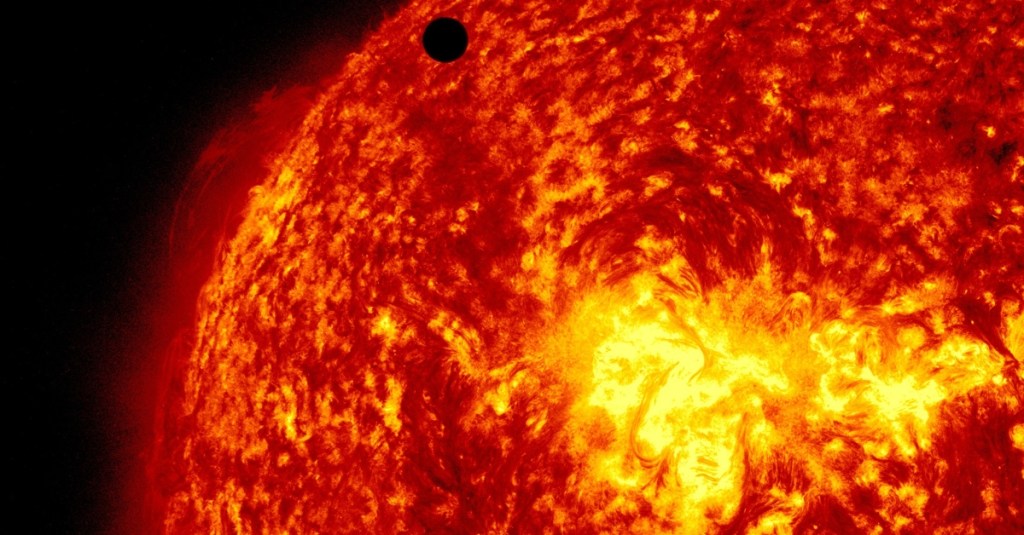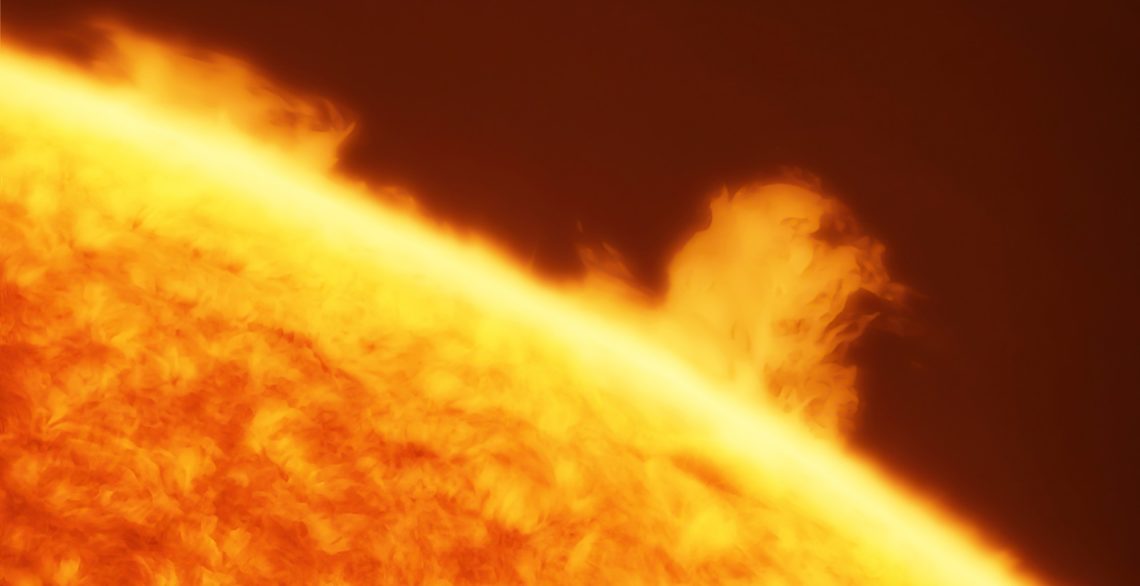It sounds odd, but it’s true: it rains on the sun.
It rains two million-degree plasma. This solar rain falls in the Sun’s outer atmosphere, the corona, when hot plasma cools, condenses, and falls back to the surface. This isn’t a discovery. Scientists have known about it for years. They just never worked out the mechanics of it all.
As detailed in their paper published in The Astrophysical Journal, a team of researchers at the University of Hawaii thinks they’ve got it figured.
The researchers say the problem the scientific community had all these years wasn’t with the rain itself; it was the math involved. The Sun’s atmosphere is made of plasma threaded with magnetic fields, and most computer models treat the mix of elements in that plasma like a bunch of static, a big jumbled mishmash of information.

Why It Rains on the Sun
The sun is a constantly shifting set of elements that can be hard to keep track of, since it cools by radiation, and how fast it cools depends on which elements are where at any given time.
Graduate student Luke Benavitz and his team upgraded a simulation tool called HYDRAD, which models plasma flowing along magnetic field lines. They added a new equation to allow the element mixing to vary in space and time, especially for “low-FIP” elements like iron and silicon that can be found in magnetic storms.
Once they did that, the model started behaving like the real Sun, meaning hot plasma surged upward, cooled faster at the tops of magnetic loops, and then condensed into blobs that rained down.
The data even lined up with satellite observations from Japan’s Hinode spacecraft, which found that solar rain’s chemistry looks like the Sun’s surface inside the rain, but like the corona in the surrounding plasma. The model predicts exactly that, meaning this isn’t just an odd numerical fluke, but that this is how the sun actually works.
According to co-author Jeffrey Reep, this discovery might force researchers to rethink everything they know about the Sun’s heating and cooling cycle. All solar physicists could do was guess how much energy the corona loses. If they guessed wrong, their solar weather models could be thrown entirely out of whack.
The post It Rains on the Sun, and Now We Know How (and Why) appeared first on VICE.




